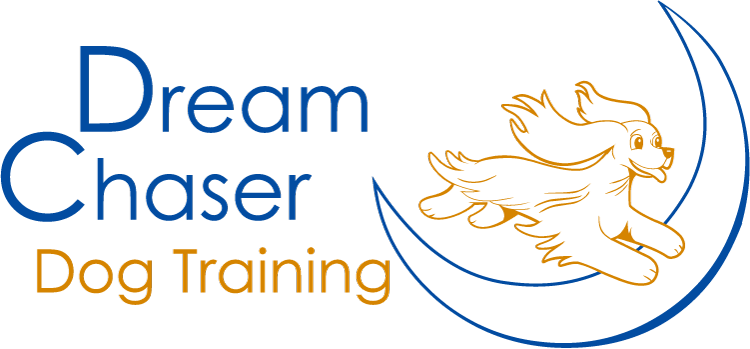Middle - The Safe Zone
While most people think of skills as human conveniences, skills are often taught and used to benefit the dog. Skills can give him information on what is expected, boundaries and safety.
My youngest dog, Joey, can get quite nervous in crowded, busy environments or when unknown people approach him too quickly. When faced with an uncomfortable situation, he started to back into me until he could feel me behind him, and he’d sometimes then sit. Sometimes just in front of me and sometimes on one of my feet. He could feel that I was still there but could also keep an eye on everything around him, giving him a bit of security and the ability to calmly take it all in.
This is self-stationing. Stationing is commonly used in training all types of animals for a wide variety of tasks, especially health and wellness exams, when the animal needs to be still. It promotes impulse control and a state of calm, which can build confidence. And, over time, increased confidence may make use of the skill unnecessary.
We turned this into a skill that we call “Middle.” It’s a simple sit between my feet. Joey learned this easily as it was labeling and finetuning something he already offered. It’s a great skill for him in that he feels safe and can stay calm, even if in an environment that would usually make him nervous and possibly reactive. I’ll talk to him when he does “middle” and sometimes feed him, either small treats one at a time or letting him lick a food tube, as the act of eating or licking can also be calming for a dog.
This simple skill has allowed us to do more together. For us, Joey usually self-selects the skill, but I can also request “middle” in anticipation of a difficult environment or situation. With this skill, we’ve been able to successfully attend workshops and training events and compete in Nosework, where there can be quite a bit of wait time.
So, when exactly do we use it?
Whenever he has to wait his turn – at a nosework event or in a group class
Whenever he has to wait just a bit – to cross the street, if there’s a lot of traffic as this keeps him focused and prevents him from wandering out too far
Anyplace that he’s uncomfortable – while waiting to be seen at the animal hospital or while waiting for the vet to come into the exam room
If your dog is nervous or shy, this might be a skill that he’ll welcome and, once trained, offer when needed. Not sure how to get started? A Certified Professional Dog Trainer can help. Find one near you at https://www.ccpdt.org/.

